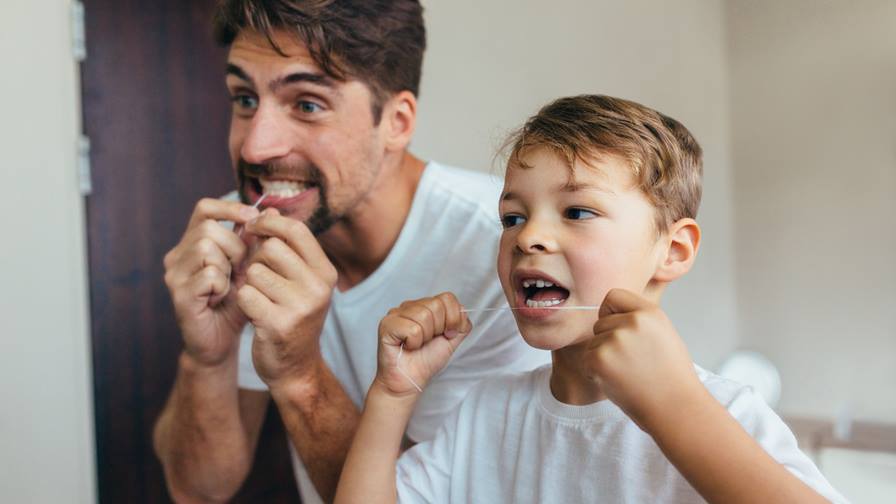Did you know that your child’s teeth are at risks of decay as soon as they appear? That means that by 6 months of age, your child is at risk of cavities and decay! At such a young age, many of these cavties arise as a result of sipping on a bottle at bedtime after brushing their teeth (because milk has sugars in it that can build up and lead to decay).
The good news is, tooth decay is completely preventable! By starting the right brushing habits early, you can ensure that your child’s teeth grow strong and healthy, paving the way for healthy adult teeth once they eventually grow in.
Here’s how to start caring for your child’s teeth when they are young:
0-6 Months:
Oral health can begin before your baby even has teeth – remember, the gums are important too! So even before the baby teeth have started to grow in, you can use a clean, damp washcloth to run over their gums to remove any builtup bacteria.
6 Months to 2 Years:
By two years of age your toddler should now have touch teeth. Continue to use small portions of flouride toothpaste to brush, but encourage them to start spitting it out when the brushing is finished. Now is also the time to start incorporating flossing into your daily routine.
3+ Years:
By three years of age, children should now be using a pea-sized amount of flouride toothpaste and flossing should still be a regular part of the daily brushing routine. Now is a good time to start encouraging your children to brush themselves. It may take them a while to get the hang of it, so supervision and help will be required. It’s always recommended that you supervise your children when brushing until they are older than 8, as children younger than 8 are more likely to swallow the toothpaste.
How to Avoid Cavities and Decay:
Cavities are a result of bacterial buildup, and bacterial buildup is a result of food being left on the teeth. When bacteria starts to build, acid starts to soften enamel and eventually a hole will appear on the tooth. This whole is called a cavity and can lead to the need for a tooth to be filled or removed. So how can you reduce the risk of cavities in children?
- Avoid sugary foods like juices and candy.
- When your child eats sugary foods, brush their teeth immediately afterwards.
- Brush your child’s teeth at least twice a day, and floss at least once.
- Ensure that you are using a fluoride toothpaste – it helps to toughen enamel.
- Visit the dentist for regular checkups and cleanings.
At What Age Should Your Child Start to See a Dentist?
It’s generally recommended that your child has their first dentist appointment shortly after their first birthday. Starting a child with visits to the dentist at a young age will help them to understand and appreciate oral health, and can help you to learn how to properly care for your child’s delicate baby teeth.
Tips for Getting Your Children to Brush Their Teeth:
- Show, don’t tell. Your child is your biggest fan, and if they see you doing it, they’ll want to do it too.
- Read books about brushing your teeth to make it more exciting.
- Choose an electric toothbrush to make brushing more fun.
- If your child wants to be independent and try brushing on their own, let them. Just be there to supervise and guide.
- Try a flavoured toothpaste.
- Reward your child for brushing their teeth properly.
Finally, remember to make your child’s dental regimen a priority – the healthier their baby teeth are, the healthier their adult teeth will be too.


